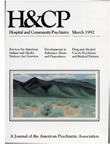Detection of Alcoholism Among Burn Patients
Abstract
To determine the prevalence of alcoholism among patients at a large inpatient burn center, a semistructured interview for diagnosing alcoholism—the CAGE questionnaire—was administered. Of 124 patients interviewed, 24 (19 percent) were found to have an alcohol problem based on responses to the CAGE questionnaire. However, when patients' charts were reviewed at discharge, only seven of the 24 subjects were described as having an alcohol-related problem. Of the 22 subjects whose alcoholism was detected by the CAGE questionnaire and for whom blood alcobol screens had been obtained on admission, only seven had a positive screen. About 70 percent of the patients with alcoholism were missed by blood akohol screens on admission and by the usual procedures for gathering patient information on admission and during hospitalization. The study found that use of the CAGE questionnaire greatly increased the detection of alcoholism in burn patients.
Access content
To read the fulltext, please use one of the options below to sign in or purchase access.- Personal login
- Institutional Login
- Sign in via OpenAthens
- Register for access
-
Please login/register if you wish to pair your device and check access availability.
Not a subscriber?
PsychiatryOnline subscription options offer access to the DSM-5 library, books, journals, CME, and patient resources. This all-in-one virtual library provides psychiatrists and mental health professionals with key resources for diagnosis, treatment, research, and professional development.
Need more help? PsychiatryOnline Customer Service may be reached by emailing [email protected] or by calling 800-368-5777 (in the U.S.) or 703-907-7322 (outside the U.S.).



